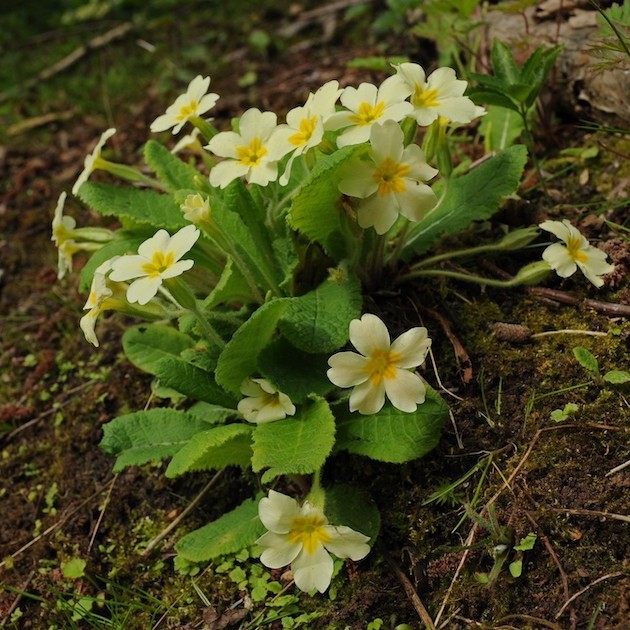
It must be spring when there are primroses.
Photo: © Natural England/Peter Roworth
Scientific name: Primula vulgaris
Other common names: Common Primrose, English Primrose
Cornish name: Briallen
What to look for:
- Family: Primulaceae
- Flowers: Distinctive five-petalled flowers, naturally varying from pale to deep yellow.
- Leaves and stem: A rosette of wrinkly looking spoon-shaped leaves up to 15 cm in length, which are downy on the underside and an uneven margin. There is no stem (sometimes a very short one) but the flowers are borne on downy stalks.
- Height: Flower stalks are 5 to 12 cm long.
- Where: Woods, grasslands and hedgebanks (especially north-facing) across the country.
- When: Flowers from March to June.
- Habit: Upright.
The Primrose is one of our most familiar flowers, ushering in spring along with the Celandine and Violet. Its common name is from the Latin prima rosa, which translates as ‘first rose’.
Always a welcome sight even in ones and twos, in the west we often find swathes of them growing alongside hedges, where the natural variation in their colour from pale to deeper yellow is particularly striking. Some flowers are even white with a pale yellow centre.
Primroses are edible: the leaves can be used to make a tea, and early flowers can be used to make wine.

Did you know…?
…Primrose Day is celebrated on 19th April, the day Benjamin Disraeli died. He loved Primroses and Queen Victoria often sent him posies of the flowers. She also sent a Primrose wreath on the occasion of his funeral, and on 19th April every year Primroses are placed on Disraeli’s statue where it stands before Westminster Abbey.
…In some parts of the country, it was once believed that a child who ate a Primrose might see a fairy.
More information and references:
Baker, M., 1928 (reprinted 2001). Discovering the Folklore of Plants. Shire Publications Ltd., Buckinghamshire.
Mabey, R., 1997. Flora Britannica. Chatto & Windus, London.
Rose, F. and O’Reilly, C., 2006. The Wild Flower Key, 2nd edition. Frederick Warne, London.
Stace, C., 2010. New Flora of the British Isles, 3rd edition. Cambridge University Press, Cambridge.
Published: March 2015
Author: Amanda Scott
Photos: Upper – © Natural England/Peter Roworth; lower – Amanda Scott
